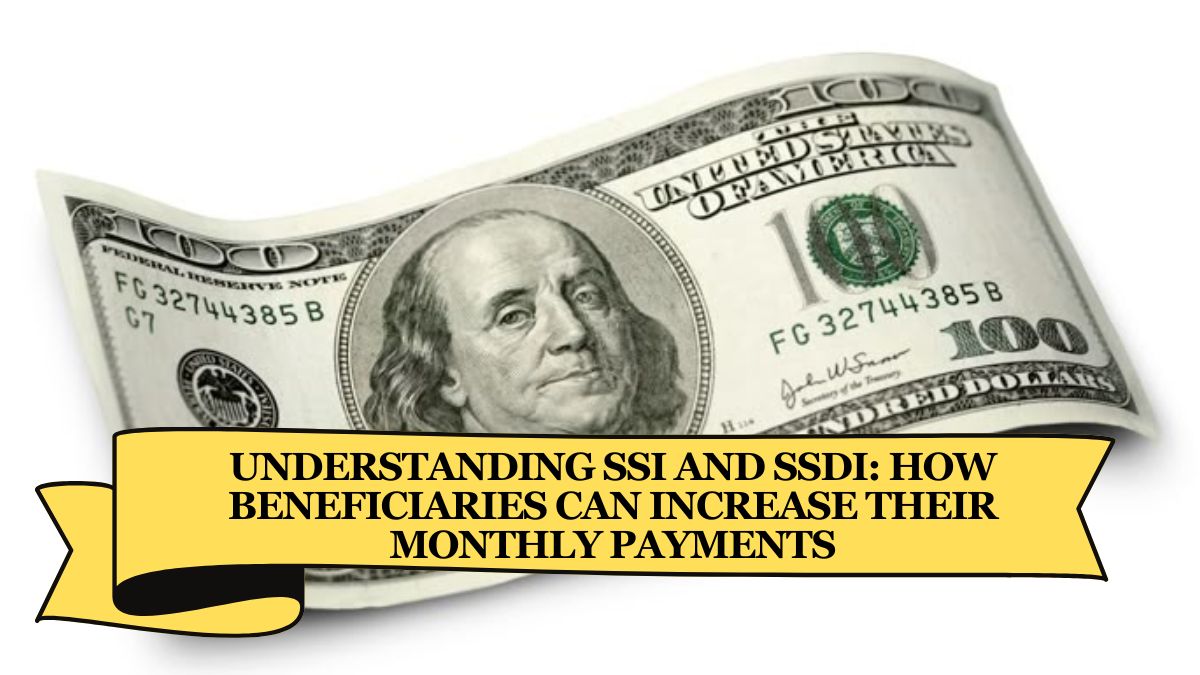Social Security is one of the main programs that help people with financial assistance in the United States, especially when they face difficulties due to aging, disability, or the death of a loved one. While many people think of it only as a single program, there are actually different types of support available. Two important programs are Supplemental Security Income (SSI) and Social Security Disability Insurance (SSDI). These programs aim to help people who are struggling financially due to different circumstances.
In this article, we will explain how beneficiaries can increase their monthly payments by combining SSI and SSDI. We will also dive into how these two programs work together, who can apply for both, and the criteria you need to meet to qualify for both types of assistance.
What Is SSI and Who Can Benefit?
SSI, or Supplemental Security Income, is a program for people who have limited income and resources. It helps people who are elderly (65 years or older), blind, or disabled. The payments are intended to help cover essential living expenses like food, clothing, and shelter. SSI is not based on the person’s work history, and anyone who meets the age, disability, or blindness criteria can apply, as long as their income is low enough.
Eligibility for SSI
To qualify for SSI, you must be:
- 65 or older, or
- Disabled or blind, and
- Have limited income and resources.
For an individual, income should not exceed $1,971 per month, and resources must not be more than $2,000. For a couple, the limits are $2,915 for income and $3,000 for resources.
Average SSI Payments
The average SSI payment in 2024 was around $698.35 per month. However, depending on income, this amount may vary.
What Is SSDI and Who Can Benefit?
SSDI, or Social Security Disability Insurance, is a program designed to help people who have worked and paid Social Security taxes but are now unable to work due to a disability. The amount you receive depends on your past earnings and the number of Social Security credits you have accumulated. You can qualify for SSDI if you meet certain criteria regarding your work history and medical disability.
Eligibility for SSDI
To qualify for SSDI, you must:
- Have a medical condition that prevents you from working for at least one year, or that is expected to result in death.
- Have worked long enough to earn enough Social Security credits. The number of credits you need depends on your age when you became disabled.
Average SSDI Payments
The average SSDI payment in November 2024 was around $1,404.51 per month. SSDI payments can be higher or lower depending on your earnings before you became disabled.
Can You Get Both SSI and SSDI?
Yes, in some cases, you can receive both SSI and SSDI payments at the same time. This is known as concurrent benefits. However, there are strict criteria to meet.
How to Qualify for Both SSI and SSDI
- You must meet the eligibility criteria for both programs.
- Your SSDI payments must be low enough that you are still eligible for SSI.
It’s important to note that while receiving SSDI does not automatically disqualify you from SSI, the amount you get from SSDI can affect the amount of SSI you will receive.
How SSDI Affects SSI Payments
Receiving SSDI payments might reduce the amount you receive from SSI because both programs have income limits. Since SSDI payments are counted as income for SSI, receiving SSDI could lower your SSI payment. However, you may still qualify for SSI if your total income (from SSDI and any other sources) remains below the SSI income limit.
Example of SSI and SSDI Combined
For example, if you qualify for $1,000 per month in SSDI but your SSI eligibility is $698.35 per month, your total payment could be a combination of both, but the amount of SSI will be adjusted to account for the SSDI income.
Why Combining SSI and SSDI Is Beneficial
If you meet the eligibility criteria for both SSI and SSDI, you can receive two separate payments, which can greatly increase your overall monthly income. This helps people with disabilities or those who are elderly maintain a higher standard of living.
By combining both programs, beneficiaries can cover more of their living costs and have more financial security, even if they have limited work history or income.
Conclusion
The ability to receive both SSI and SSDI benefits can be a significant advantage for those facing financial hardships. These programs work together to provide additional support to individuals who are elderly, disabled, or who have lost a loved one. While qualifying for both programs requires meeting specific criteria, the financial boost that comes from combining SSI and SSDI payments can help improve the quality of life for millions of Americans.
Staying informed about the eligibility requirements and how each program works will help beneficiaries make the most out of their social security benefits. By understanding how to apply for both SSI and SSDI, individuals can navigate financial challenges more effectively and secure the support they need to thrive.
You Must Visit: California State Online

